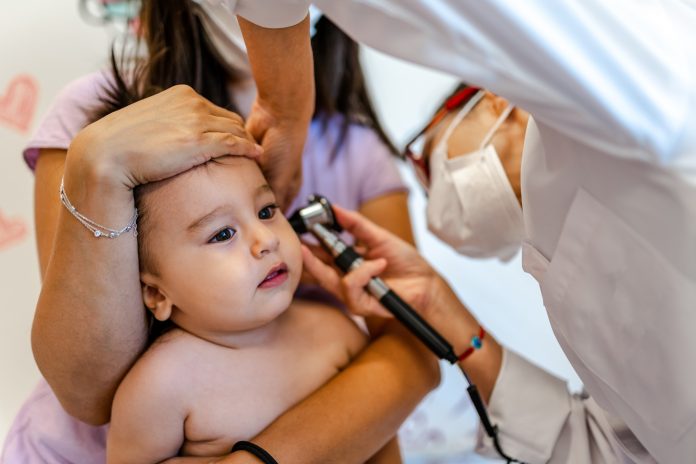
A new artificial intelligence model developed by Mass Eye and Ear, an international center for treatment and research and a teaching hospital of Harvard Medical School, has been shown to be significantly more accurate at diagnosing pediatric ear infections than clinicians—the first head-to-head evaluation of its kind.
The new study, published in the journal Otolaryngology–Head and Neck Surgery, showed that the model was 95% accurate using 22 test images to diagnose ear infections. A team of clinicians comprising ENTs, pediatricians and primary care doctors, who reviewed the same images correctly diagnosed only 65% of cases. When the tool, named OtoDx, was further tested on a set of more than 600 images of the inner ear, it demonstrated a diagnostic accuracy of 80%, well in excess of the rates of diagnoses of clinicians reported in medical literature.
“Ear infections are incredibly common in children yet frequently misdiagnosed, leading to delays in care or unnecessary antibiotic prescriptions,” said Matthew Crowson, MD, lead author of the study and an otolaryngologist and artificial intelligence researcher at Mass Eye and Ear in a press release. “This model won’t replace the judgment of clinicians, but can serve to supplement their expertise and help them be more confident in their treatment decisions.”
The model leveraged deep learning techniques and was trained using more than 693 images of tympanic membranes from children aged 18 years or younger who were undergoing surgery for tube placement or draining fluid from the ears at Mass Eye and Ear. The images were tagged as either “normal,” “infected,” or having “liquid behind the eardrum,” as opposed to the “normal” or “abnormal” classification from the team’s earlier model. With the added segment, the model achieved a mean diagnostic accuracy of 80.8%.
Potential reduction in antibiotic prescriptions
Ear infections are very common in young children, with the National Institute on Deafness and Other Communication Disorders noting that five out of six children will have had at least one by the time they are three years old. Untreated inner ear infections can lead to a number of poor outcomes including hearing loss, developmental delays, and other complications such as bacterial meningitis.
With ear infections so common, and the potential of significant health problem if left untreated, doctors with young patients often prescribe antibiotics if an infection is suspected, even though diagnostic accuracy by clinicians hovers around 70%. These data suggest that many children are unnecessarily treated for a condition they don’t have, which can potentially lead to antibiotic resistance in these patients, rendering these medications ineffective against future infections.
“Since clinicians would rather stay on the side of caution, it’s pretty easy to see why parents typically walk out of urgent care with a prescription for antibiotics,” Crowson said.
Refining the AI tool
Researchers have continued their work with ongoing studies to both refine and validate the AI-based diagnostic tool, with more than 1,000 intraoperative images of the tympanic membrane collected by the Mass Eye and Ear team to date.
As the researchers look to provide a viable tool to that can be widely used to diagnose ear infections at clinics to assist doctors in patient evaluation, OtoDx is currently being tested by Mass General Brigham Innovation in a prototype device that is paired with a smartphone app. In this configuration, the device uses the smartphone’s camera to allow clinicians to take photos of inside the ear of children. These images are then uploaded for analysis by OtoDx and can deliver a reading within seconds.
As the tool is further refined from this pilot project, the intent is for Mass General Brigham Innovation to aid in the commercialization of OtoDx.













